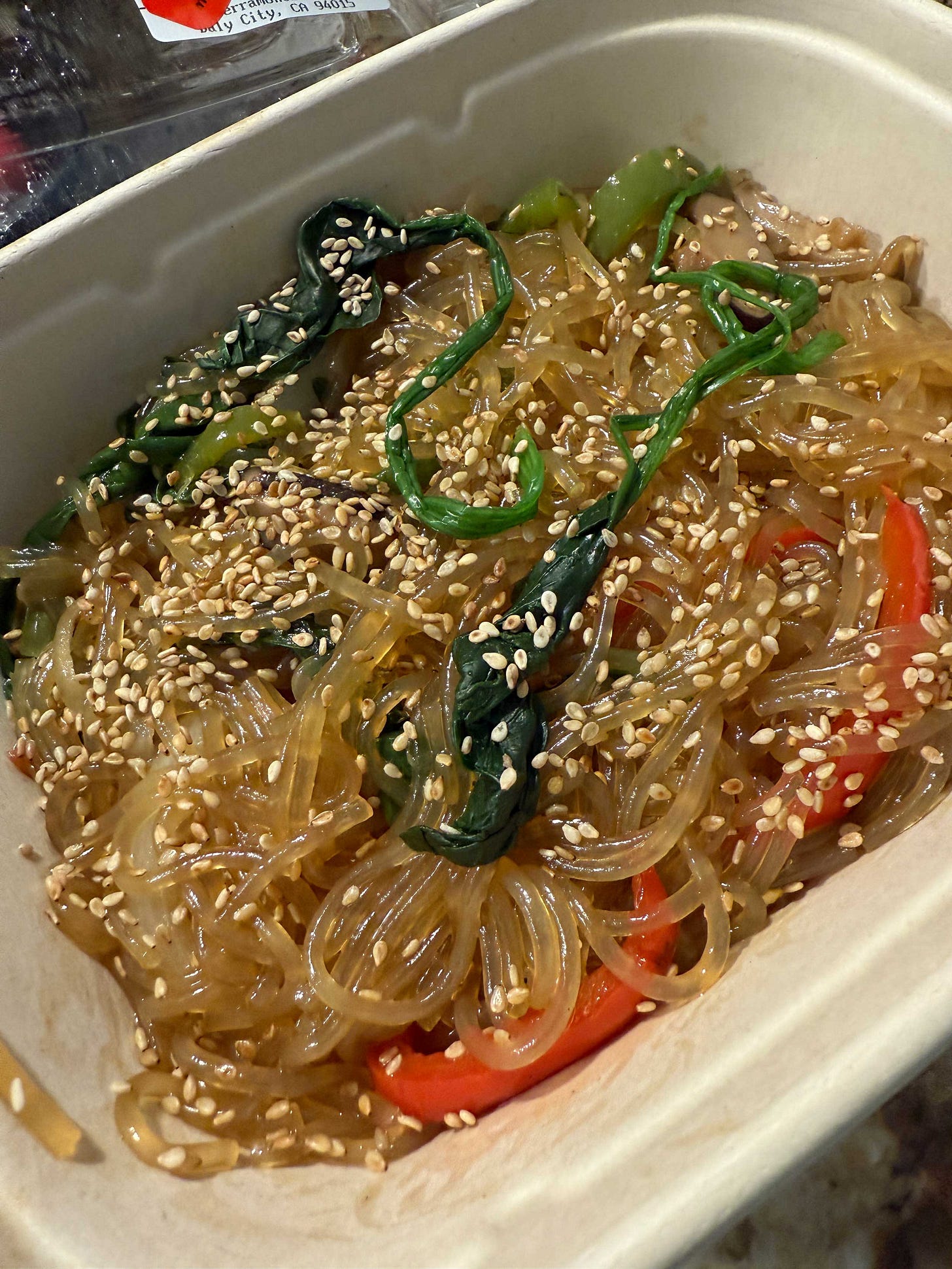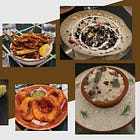When authenticity is performative
A hot take on why gatekeeping what‘s culturally “authentic” can often be problematic itself.
Issue #94
Hi all — A hot take today…
A couple months ago, I drove over early one morning to a giant parking lot, waiting to enter Jagalchi, a new Korean grocery story and food hall that has been so popular that there are often long lines to enter on weekends.
Inside, I marveled at the wide selection, organized layout and clear signage — making me feel like I was more in futuristic Seoul than a blah San Francisco suburb. There were rows and rows of imported Korean foods, including an entire section of prepared meals. I was so impressed I even I texted the family group chat when I got home to unpack some Korean glass noodles: “Got Korean temple food from this new grocery store … We need Indian stores this nice in the U.S.!!”
This weekend, the San Francisco Standard published a column about Jagalchi with the headline: “The Korean food hall the repels Koreans.” That’s a certain reaction in parts of any diaspora, Korean and South Asian included. If something deviates from a traditional norm, it is sometimes denounced as Westernized and not authentic. The author writes:
Despite clear overhead signage (in English), I, a 36-year-old veteran Korean grocery shopper, felt lost. I couldn’t tell if it was the dim lighting, the outsize displays of instant ramen and soju, or the museum layout, with wide pathways built for browsing, but the glossy sheen felt foreign. Where were the cramped aisles stocked floor-to-ceiling with 14 brands of sesame oil and packages of roasted seaweed in every shape and size? Why were there signs with elementary explanations of “banchan” and “tofu”? Who was this place for? It felt like something had been lost in translation between Busan and Daly City. This Jagalchi wasn’t built for me; this Jagalchi was built for people who don’t know the difference between kimchi and kimbap.
Of course, everyone is entitled to their own opinions, and I can imagine there are other Korean Americans that feel that same way. I’m not Korean, but from my perspective as a fellow second-generation kid, I find reactions like these something to reflect on.
As I wrote about Indian food deserving to have a wide range of styles and evolutions in the U.S. last year, I believe gatekeeping and the somewhat snobby perspectives about authenticity are misguided.
Why is “authenticity” an antiquated definition of what our cultures are?
Yes, until very recently, Indian grocery stores across the U.S. were also mostly started by fellow immigrant owners who with amazing hard work and business acumen imported goods all the way from our ancestral countries to stores within a drivable distance. But just because those early days were full of more struggles — smaller store footprints, shelves that were harder to keep clean/organized, products without UPC codes that the shopkeeper would manually ring up prices from memory — why does that still have to be what’s “authentic” in 2025?
The urban hubs of Asian countries have far evolved what we often find in some of our own ethnic enclaves here in the U.S. I think it’s somewhat insulting to our own cultures to assert that something modern and fresh isn’t authentic. Case in point, the Mumbai or Bengaluru airports are objectively nicer than Newark or Dulles these days.
I appreciate the growing crop of Indian grocery store experiences around the U.S. with better lighting, aisles that are clearly labeled where bags of rice aren’t falling into disarray and prices that are transparently displayed.
It’s problematic to think something different is not “built for me.”
If an Asian grocery store were a little bit dirtier and less organized would that make it feel more like home? I reject that notion.
I also have 1990s nostalgia for the biweekly drives to Indian grocery stores in our minivan, Kollywood songs blasting on the cassette player. But personally, these days, I’d also be excited if there were Indian grocery stores as fun as a Trader Joe’s that are full of unique discovery, hand-drawn signs and quirky branding. Or imagine an option for an Indian store that highlights organic South Asian goods like a Whole Foods. Or something that gets non-Indians more curious about home-cooked Indian food, like Jagalchi is doing with Korean ingredients. Would I go to these places every day? Probably not. But I believe our cultures deserve a range of options, too, and we should allow ourselves to evolve as a diaspora — just like our ancestors’ countries have often evolved beyond where our diasporic institutions are.
Some of the best South Indian food in New York may certainly be in a basement at a Hindu temple in Queens (highly recommend, by the way). But I also think it’s awesome that you can also eat at middle-range Saravanaa Bhavan on the Upper West Side, have a special once-a-year-type dinner at Semma in the West Village, or grab Indian fast-casual at the Kati Roll Company while on the go.
What’s wrong about sharing what’s beautiful about our cultures and foods with wider populations, while still serving ourselves? Can that more accessible store — cleaner, more organized, high turnover — actually serve us, too? Why is the immediate reaction to something clean, organized and fresh that it’s “not for us” but for non-Asians — suggesting that we only deserve dingy, messy and god-forbid something not trendy?
Why is making something more accessible, also make it less appealing to some? Should I not share the wonders of coconut chutney or sambar powder with non-Indian Americans?
Why are we sometimes stuck in nostalgia, ignoring that our ancestral countries have actually innovated far beyond our memories of what they are — and thus the definition of “authentic” is ever evolving?
Is it really authentic if we gatekeep and claim things as just “ours”?
I think it is all food for thought.
Thanks for joining the conversation,
Vignesh
Disagree? Agree? What do you think? Comment below.
From the RWB archive
P.S.
Join me on a writing adventure for 100 days

I was very inspired by writer
’s 100-day project (she started on Substack during the early days of the pandemic). I am reading her new book“The Book of Alchemy,” which has 100 writing prompts from various writers. For the first time in years, I am handwriting something (almost) every day based on these prompts in a physical notebook. With a bit over 100 days left in the year, my goal is to get through them all by the end of the year — so it shakes out to approximately writing at least five days per week. If you want to be accountability buddies and join in a virtual group, let me know as we are starting a text thread. You can spend as little or as long as you want on each entry — there are no rules, just write or draw, whenever you want. For reference, I’ve probably just spent 5-10 minutes each day when I’m drinking my morning coffee or chai.Red, White and Brown Media facilitates conversations through the lens of South Asian American race and identity — via journalism, social media and events. Please tell your friends and family to subscribe to this newsletter.








Great post! Affording others the grace and patience to appreciate something you like is the first step in building a connection and a larger tent. Focusing on culture and food is a great case study of the issue but also applies politics or sports or who gets to call themselves a local of a city.
Such good questions for immigrant communities to ask! Does authenticity really have to be tied to a rigid idea of our past?